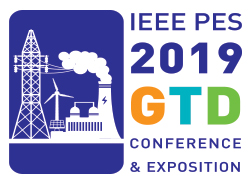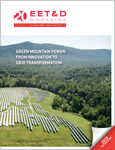 EET&D Magazine identified Hurricane Preparedness as one of the market/application focus areas for our Sept/Oct issue, but hurricane season will be well underway by then. That means thousands of homes and businesses already may be reeling from the destruction and heartache from one or more hurricanes.
EET&D Magazine identified Hurricane Preparedness as one of the market/application focus areas for our Sept/Oct issue, but hurricane season will be well underway by then. That means thousands of homes and businesses already may be reeling from the destruction and heartache from one or more hurricanes.
Some areas hit by Hurricanes Harvey and Maria are still recovering. Puerto Rico still has thousands of residents without power, while the island braces for this year’s raging storms. So how do utilities get ready for another hurricane season? It is a rhetorical question, but more utilities are partnering with their customers and industry partners to figure out lasting solutions.
A number of articles in this issue of EET&D demonstrate how industry thought leaders are seeking best practices to bolster the power grid. This issue also spotlights some of the ways the industry’s efforts to improve energy use and reliability, which will allow for quicker resilience.
For example, S&C recently partnered with Frost & Sullivan on a Commercial & Industrial (C&I) power reliability study. In his article about this study, Jerry Yakel explains how everyone tolerates outages differently. Power outages are an inconvenience that can result in spoiled food or foil tasks like cooking or doing laundry, but most of us can resume our lives as soon as the power comes back on. When hospitals experience these same power outages, the impact can be deadly. While the S&C study did not provide instant answers, the responses show to what extent C&I customers will go for more reliable power – even if it means deploying their own alternative energy sources, independent of the utilities.
In his article for this issue, Peter Fairbanks, with Fairbanks Energy Services, talks about how some facilities, such as hospitals, cannot afford to be without power for long. Pointing to some specific energy challenges hospitals¬face, Fairbanks suggests steps hospitals can take to improve their overall energy efficiency without completely disrupting their daily operations. Fairbanks’ suggestions, if followed, could result in safer and more energy-efficient environments for patients and hospital staff. In the long run, a facility that focuses on how energy is used is likely to have a better handle on its reliability before and after a catastrophic storm.
Dan Coughlin, with the American Composites Manufacturers Association, explains how replacing the old wooden utility poles with poles that are made of composite materials will help mitigate power outages. Replacement is a massive undertaking that is not inexpensive, but Coughlin makes a compelling case for why now is the time to invest in storm-resistant utility poles.
Looking to battery storage, Green Mountain Power (GMP), may have found an approach to ensure both C&I customers and homes alike have backup power during outages. As you will read in the Grid Transformation Forum, GMP is piloting a program to offer Tesla’s Powerwalls as backup power for residences during peak periods or outages. Granted, GMP is a smaller utility, and the program is in its infancy stage, but if this program succeeds, it could be a matter of time until larger utilities can scale this or similar programs for their customers.
Regardless of time of year, there will always be some disaster to affect the power grid. By showcasing our partners’ successes, we hope EET&D readers will learn from each other’s missteps and successes in order to respond to and quickly recover from whatever natural or human-made disaster comes their way.

In the May/June issue, I mentioned that EET&D Magazine was the media sponsor for the inaugural IEEE PES GTD Conference in Asia next year. I wanted to provide a little more information for our readers, which is why I am thrilled I had the opportunity to ask Saifur Rahman, Ph.D., who is the 2018-2019 president of the IEEE Power & Energy Society, about this new conference.
EET&D – Who will benefit from attending?
SR – Manufacturers, vendors, consultants, electric utility engineers and executives, regulators and academics will benefit from attending. This is because all parties will have a chance to see the huge displays of electrical hardware, discuss with industry engineers and designers the operations of complex and modern hardware being introduced.
EET&D – How will they benefit?
SR – Through networking, visiting display booths and sharing each other’s experiences.
EET&D – How many attendees do you expect for the first year?
SR – We expect 3000 attendees and 1000 exhibitors.
EET&D – In discussions about the event, people have asked why IEEE would want to participate in a market that uses IEC standards. Can you speak to this?
SR – IEEE does not produce standards for a given country; it produces standards for technology under consideration. For example, IEEE 802.11 (for wireless data communication), IEEE 1547 (for renewables integration). What standards a country choose to use depends on that country’s standards board. Some countries accept
IEEE standard for their own use; some accept IEC standards, and some accept both. IEEE just offers alternatives for the country’s standard board to consider.
To learn more about the IEEE PES GTD Conference, visit http://ieeegt-d.org/
If you would like to contribute an article or if you have an idea about interesting technology, solutions, or suggestions, please email me at Elisabeth@ElectricEnergyOnline.com.
Elisabeth








